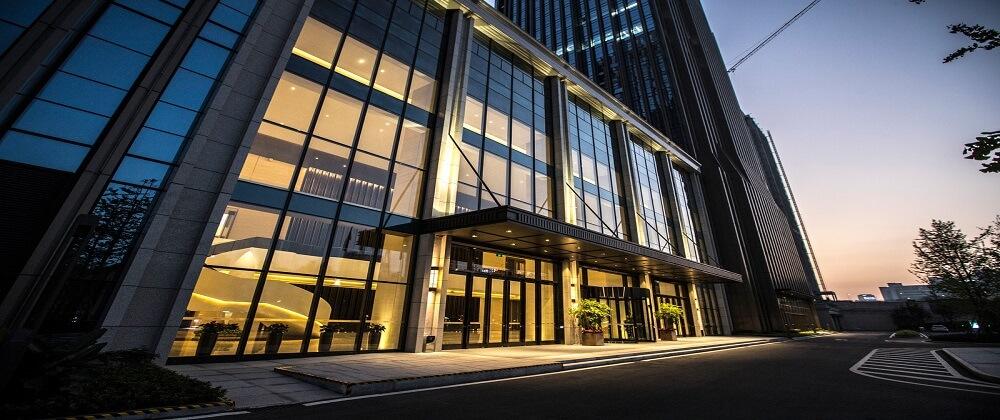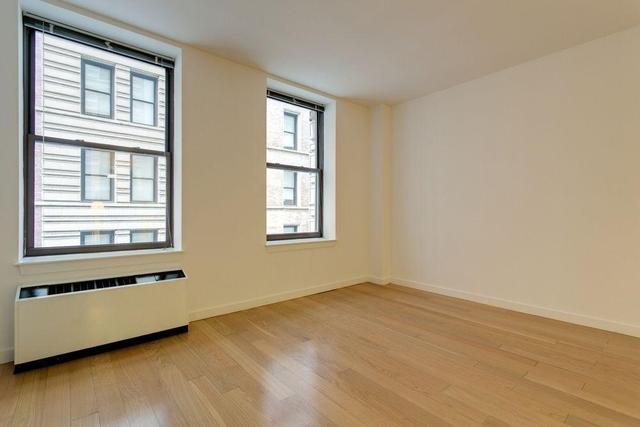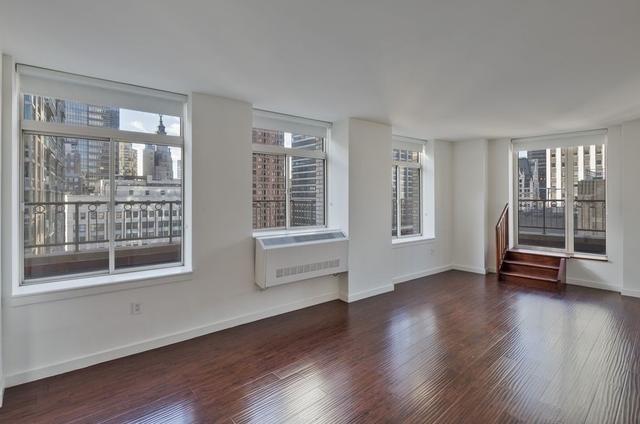
Safe and Sound: Best Practices For Operating a Commercial Property
By: ROS Team
Property management encompasses far more than keeping the building operational; it requires taking an all-encompassing approach to safety, risk mitigation, and preparedness. Property managers today must be diligent and proactive when it comes to safety for themselves, tenants, and visitors. This article dives into key elements of managing commercial properties with safety at the forefront, offering insights and strategies to help effectively oversee them.
Commercial Property Management Concepts
Commercial property management is an essential component of real estate, responsible for overseeing daily functions related to buildings used for business purposes such as retail stores, office complexes, and industrial facilities. Property managers play an essential role by maintaining properties under their care in excellent condition while giving businesses located there the space needed for growth and prosperity.
Effective property management goes well beyond simple upkeep, involving complex tenant relationships, lease negotiations, financial planning, and more. Managers play an integral part in increasing renters’ interest by making it safe yet aesthetically pleasing – leading to higher profits and long-term value of properties managed well. Successful commercial property management relies upon being able to balance these competing responsibilities for an ideal working environment where businesses thrive and expand.

Importance of Safety in Commercial Property Operations
Safety should always come first in commercial property operations, Safety forms the cornerstone upon which all other aspects of property management rest. Safety measures on a property protect both tangible assets, like its structure and equipment, as well as intangible components of its value such as the health and well-being of all those entering. Committing to creating an environment free from accidents reduces liability issues for property owners while inspiring confidence among tenants and employees – something essential to its success and longevity.
Prioritizing safety also fosters positive associations with a property – essential elements that ensure its long-term viability. Ensuring safety therefore goes beyond mere compliance with regulations; it should be treated as an investment strategy that enhances the overall value and appeal of the asset.
Identification of Risks and Threats to Commercial Properties
Step one of protecting a commercial property should be to assess all of its threats and vulnerabilities. These threats can vary significantly with properties themselves and range from natural hazards such as earthquakes and floods that are difficult to predict or manage, to theft, vandalism, and even terrorism that requires specific approaches for management and mitigation. Identifying possible risks shouldn’t be interpreted as inciting panic; on the contrary, it should be regarded as a crucial component of readiness.
The Importance of Insurance in Commercial Property Management
A critical aspect of managing commercial properties is securing insurance coverage. Getting commercial real estate insurance provides a crucial layer of protection, ensuring you are not left to deal with the aftermath of unforeseen events on your own because it covers a variety of situations, including property damage, business interruption, and liability claims, establishing itself as a fundamental component of effectively managing commercial property.
Think of it as an invaluable layer of protection, standing by you if anything goes awry and making sure that when things do go awry, they aren’t left facing their consequences alone. Property and liability insurance cover an array of scenarios, ranging from property damage and business interruption to liability claims – making it essential to the successful running of any commercial property. And while meeting legal requirements is certainly an advantage, having peace of mind is also priceless.
Knowing you have customized coverage tailored specifically to the unique requirements of your property allows you to concentrate on its daily operations with confidence that whatever might arise will be covered.
Essential Safety Measures for Commercial Properties
Crafting an effective safety plan for commercial properties is a core part of property management, including installing and maintaining advanced security systems and fire alarms, as well as conducting comprehensive surveillance of the premises. Adherence to local safety codes and regulations is both legally necessary and ethically essential, ensuring all occupants enjoy maximum levels of safety and security.
Beyond these physical measures, training property staff on emergency response procedures is also paramount to ensure they can quickly respond in an emergency to minimize harm. Regularly scheduled training sessions reinforce protocols so all staff members are prepared to handle pressured situations correctly.
Implementing Fire Safety Measures
Fire prevention and response are of critical importance in commercial property safety, making their installation paramount to success. Extinguishers, sprinkler systems, and smoke detectors should all be part of any comprehensive fire safety system installed on a property – this should just be considered the starting point.
Establishing escape routes and conducting regular fire drills are essential steps toward ensuring employees and residents know how to safely evacuate a building should a fire arise. Not only can these drills prepare people for what might happen should it occur; but these exercises also highlight any weaknesses that need addressing in their evacuation plan.
Fire safety requires ongoing commitments in terms of prevention, education, and preparation in order to decrease risks associated with fire-related incidents while simultaneously protecting lives and property while building our preparation.
Ensuring Structural Safety
Safety for commercial properties relies heavily on their structural integrity. Experienced structural engineers play an invaluable role in helping property managers identify any threats to building safety such as foundational weaknesses or structural damage that might pose potential dangers, so accidents causing injuries, deaths or significant financial losses can be avoided.
Ensuring compliance with relevant construction and safety standards is both a regulatory obligation as well an essential element of risk management; taking early action against issues can ensure users’ well-being as well as protect investments made into buildings.
Securing the Property: Anti-Theft and Vandalism Measures
Commercial property managers must employ various security measures in response to threats like theft and vandalism in order to safeguard assets while assuring tenant and visitor safety. High-quality locks, comprehensive alarm systems, and vigilant security personnel form the first line of defense against unwelcome access or criminal activities occurring on the property; additionally, access control systems can restrict certain areas so only authorized individuals have entry.
Lighting plays an integral part in increasing security, acting as a deterrent against criminal behavior. By lighting parking lots, walkways, and outdoor areas property managers can reduce theft and vandalism; creating a sense of safety for everyone on their premises. By strategically placing surveillance cameras throughout their property they allow real-time monitoring for fast response if any incidents arise – not only acting as deterrents against such breaches of security but also collecting evidence should something go amiss.
Fostering community among tenants and encouraging them to report suspicious activities can greatly strengthen the security of any commercial property. Engaging with law enforcement officials or taking part in neighborhood watch programs are also ways of creating a safer environment. Finally, safeguarding commercial properties requires taking an integrated approach that includes both physical security measures as well as proactive community engagement measures in order to guard effectively against theft and vandalism.
Emergency Preparedness: Preparing for Unforeseen Events and Disasters
Emergency preparedness involves being ready for anything that might arise and creating an up-to-date emergency action plan that addresses natural disasters, technological failures, and human-caused emergencies – including evacuation procedures, communication strategies, and coordination between local emergency services.
Regular drills and training sessions should take place to familiarise staff and tenants alike with your emergency plan, their roles during an incident, and any weaknesses within it that need addressing, as well as to maintain emergency supplies such as first aid kits, portable generators, and water reserves which may prove vital in times of disaster.
Preparing in advance allows property managers to lessen the impact of emergencies on their properties and the occupants who occupy them. Emergency readiness involves not just responding as events unfold but rather acting to prevent harm before it occurs and ensure the well-being of all.
Technology’s Role in Enhancing Commercial Property Security
Technology advancements have revolutionized commercial property security. From sophisticated surveillance cameras and access control systems that monitor properties from anywhere to real-time surveillance capabilities that enable property managers to keep tabs on activity occurring on their properties from any device at any time, technological innovations have greatly expanded security protections for commercial properties.
Technology can further bolster fire safety through smoke alarms and alarm systems which alert property managers or emergency services of impending fires, while structural monitoring systems allow property managers to assess building integrity by continuously testing for structural flaws that pose threats.
Emerging technologies, like drones and AI, will continue to offer innovative security solutions for property protection. Drones may be utilized for aerial inspection of hard-to-reach areas while AI can analyze security camera footage for patterns that indicate security threats.
By adopting technological solutions, commercial property managers can significantly boost safety and security within their buildings, offering peace of mind to both tenants and visitors.
Training Staff on Safety Protocols
An essential element of maintaining the security of a commercial property lies in making sure all staff members receive adequate safety training. This should encompass emergency response, fire safety procedures, and first aid – along with first aid training as required – with staff having all of the knowledge and skill to respond effectively in any given circumstance, from evacuation during fire alarms or managing security breaches to first aid responses and much more.
Regular training sessions help staff members remain aware of safety protocols, introduce new procedures or update existing ones, and foster an overall culture of safety within your property where all are aware of their role in maintaining a secure environment. Engaging your employees in training not only equips them to respond to emergencies quickly but also fosters an environment in which everyone understands the significance of remaining safe.
Staff training can be seen as an investment in the overall safety and security of commercial properties, helping employees respond more quickly during emergencies, and creating safer properties more resilient against threats than previously possible. Property managers must invest in training so as to build resilience into their properties’ defense system – so investing in staff education may lead to safer premises overall.
In Conclusion
Following these best practices, property managers can ensure their commercial spaces are both safe and thriving business hubs. Ultimately, their goal should be to create properties which not only physically secure but are financially robust as well. By doing so, their properties contribute to the vitality of the markets they serve while becoming highly esteemed members of the communities where they reside. An excellent approach to safety and management sets exceptional commercial properties apart from their competition – and makes them invaluable assets to owners, tenants, and the wider community alike.








